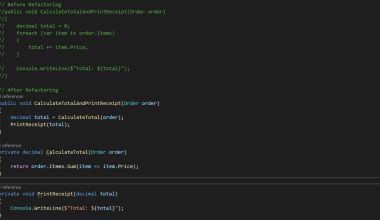Introduction
Drawing on my extensive experience as both a Software Engineer and an Engineering Manager, I have gained valuable insights into the world of Software Development and the tendencies of Software Engineers. In this article Addressing Assumptions in Software Development, we will explore some of the recurring issues arising from the isolation often practiced by Engineers and propose solutions to mitigate these challenges. We will focus on two prevalent problems in particular.
Problem 1: “It worked on my Machine, so it will work in Production.”
One common issue in software development is the assumption that if a feature or code change functions correctly on an Engineer’s local machine, it will function flawlessly in the production environment. This assumption can lead to critical problems when proper collaboration, testing, and code coverage are neglected.
Solution:
To address this problem, it is imperative for Engineers to embrace collaboration. They should actively engage with Quality Assurance (QA) and Product Managers to ensure comprehensive test coverage. This involves writing unit tests that confirm the code’s functionality and its ability to handle various scenarios. Additionally, collaborating with QA to test the code in an environment separate from the developer’s machine, such as a dedicated test environment, is essential. This ensures that the code functions as expected in the production environment and does not disrupt other system components.
Problem 2: “I have done all that I was asked to do on the ticket.”
Another common challenge in software development arises when Engineers assume they fully understand the requirements outlined in a ticket or task, leading to potential misunderstandings and conflicts with Product Managers.
Solution:
To mitigate this issue, effective communication and collaboration are key. Engineers should maintain an open line of communication with Product Managers, even when the ticket description appears comprehensive. This collaboration can involve discussing the Engineer’s understanding of the task and seeking confirmation from the Product Manager. Additionally, after implementing the feature, conducting a demo can help validate that the work aligns with the expectations and requirements outlined in the ticket.
Conclusion
In conclusion in this article Addressing Assumptions in Software Development, successful software development depends on clear communication, collaboration, and the elimination of assumptions in Software Development. Software Engineers must actively engage with QA and Product Managers to ensure code reliability and functionality. Additionally, open communication channels with Product Managers help prevent misunderstandings and enhance the overall development process. Effective collaboration is the cornerstone of successful software development, enabling Engineers to understand and deliver on requirements effectively. Watch out for my Article on Transitioning to Tech.


